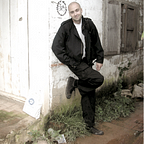The Opposite of Buddhism §3
Beware of the words “authentic” and “central” when applied to “tradition”…
[Reminder: this lecture was written for a Cambodian audience, and intended for translation into Cambodian.]
§3.
The story of Barlaam and Josaphat provides an example of the simplest method of rendering Buddhism palatable to European tastes: erasing the content of Buddhism, and replacing it with the worship of the Christian god. Although crude, this has been one of the most popular modes of misinterpretation, and still continues to this day.
In turning to the 18th century translation (that, as aforementioned, a new article has suggested was the first of its kind to reach Europe) we find two generations of men trying to foist a Christian message onto the Buddhist source. Joseph de Guignes, in 1756, exaggerated the resemblance between Buddhism and Christianity, and then concluded that the teaching of the Buddha was derivative of the gospels; in 1802, an author plagiarizing the same source presumed the resemblance between the religions, but inferred the opposite conclusion, that Buddhism must have been the source of many aspects of Christianity. (Urs App, 2010, p. 7 et seq.)
This is surprising only because it is so familiar: we see the same patterns of misinterpretation, again and again, for more than two hundred years after this precedent. What are the patterns? To name three that are evident in de Guignes' pioneering work:
(1) The first is the simple conflation of Buddhist and Christian tenets.
(2) The second is the separation of Buddhism into “esoteric” and “exoteric” halves, with these categories suiting the convenience of the European interpreter. I would emphasize that the distinction does not follow any Buddhist source (nor any indigenous belief) but instead allows the European author a “creative license” to selectively omit any evidence that would contradict his or her own argument. Already in de Guignes' 18th century analysis, this is of tremendous importance, as it allows him to dismiss as merely “exoteric” various aspects of Buddhism that are certainly incompatible with Christianity.
(3) Thirdly, we have claims about historical layers, allowing the creation of a categorical difference between “original teachings” and “later additions” to the text. This remains the linchpin of European sophistry to this day: it allows the sophist to be the arbiter of what Buddhism is supposed to be (“originally”) and then to disguise his or her own opinions as philology --while omitting mention of evidence to the contrary. This mode of argument creates a terrible illusion for the majority of readers, who come to regard European hypotheses as if they were implicit in the source text, or as if they reflected an historical diversity of views, amongst which experts have “scientifically” identified the Buddha's own.
This problem is so pervasive that some interpreters do acknowledge it, alas, most often the acknowledgment is the preamble to an excuse being made for for it, as in the following remarks from the renowned Edward Conze:
"…any interpretation of Buddhism which goes beyond the indiscriminate accumulation of quotations and attempts actually to understand Buddhist thought involves an element of choice, in that one has to decide which one among the numerous presentations of the Buddha's doctrine should be regarded as the most authentic. Bu-ston favors the Buddhism of the Pāla period, Frauwallner the Yogācārins, Oldenberg the Pāḷi Canon (minus the Abhidhamma), Stcherbatsky the scholastic Hīnayāna and the later logicians, D.T. Suzuki the early Mahāyāna and Zen, some Chinese schools the Saddharmapuṇḍarīka [“Lotus Sutra”], and so on. With Professor Murti, I regard the Mādhyamikas as representing the central tradition of Buddhism, and believe that with them Buddhist theorizing reached its full maturity. This preference colors much of what I have to say.” (Conze, 1963, p. 12)
I would draw attention to the peculiar use of the word “authentic” in the foregoing quotation, as Conze cannot possibly mean chronological antecedence nor historical validity. In fact, his use of “authentic” is not so different from his use of “central”: it indicates nothing more than the modern interpreter's arbitrary preference, placing one source at the center, and banishing other texts (perhaps containing contradictory evidence) to a periphery. These distinctions seem implicit within the ancient texts themselves, but they are entirely an effect of the interpreter's own definitions.
